I always, always stop for old cemeteries, particularly when I am traveling. This trip to London included some very particular stops to see some much beloved authors.
I went straight from the airport to Kensal Green for a tour of the cemetery. It is one of London’s “Magnificent Seven,” a series of privately-owned burial grounds for the expanding city built in the early Victorian era. This is the third one I’ve visited (Brompton and Highgate being the other two).
I don’t always love taking a guided tour as I enjoy wandering but Sue, our guide, was fabulous and loves creepy cemetery things just like me. We got along quite well. She was a wealth of knowledge and in a place as big as Kensal Green you really do need someone to show you around the first time.
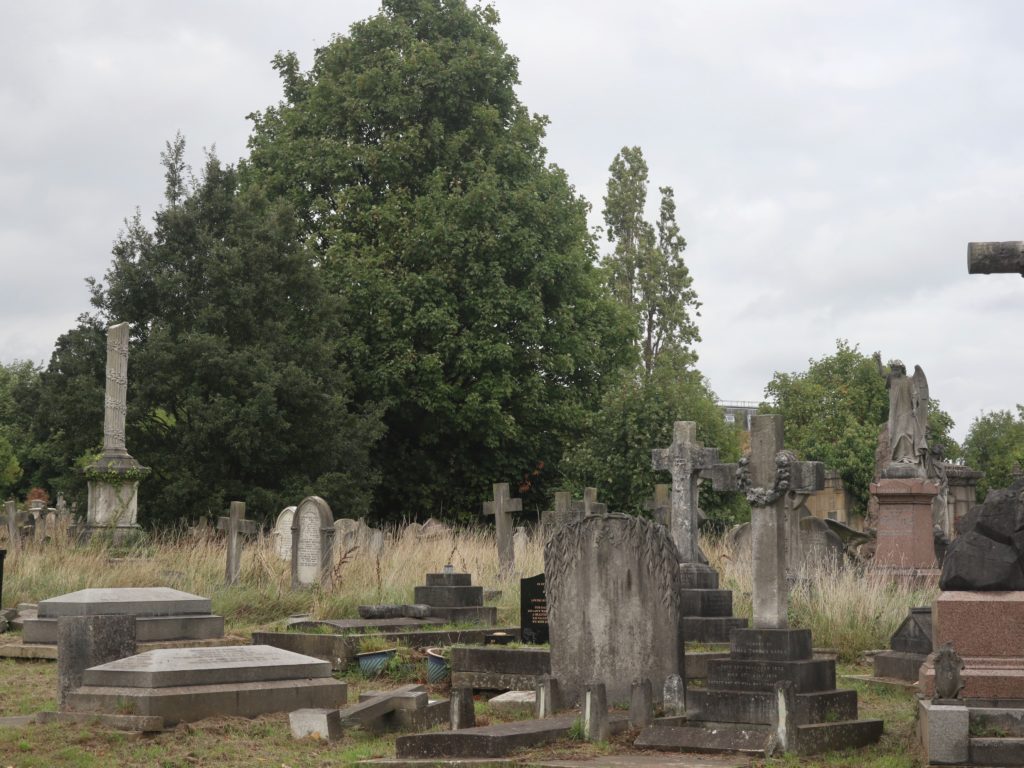
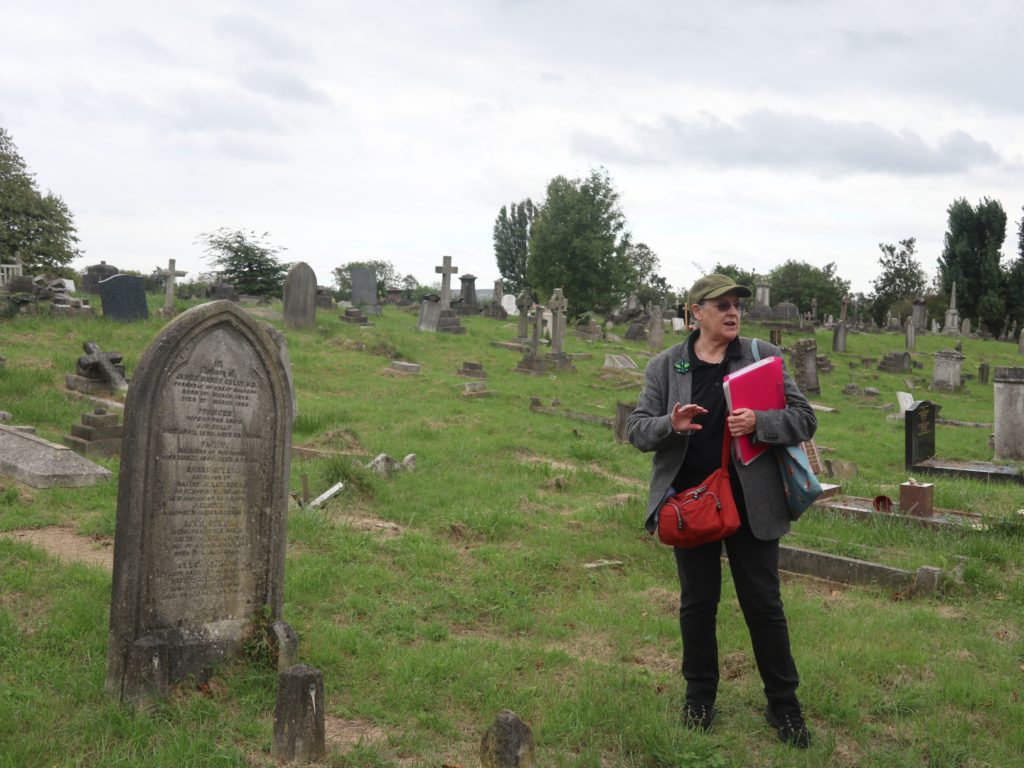
There are a fair number of scandalous Victorians peppered around Kensal Green. Dr. Gully was implicated in the Black Widow case of Florence Bravo (Read the wonderful Death at the Priory). William John Cavendish-Scott-Bentinck, 5th Duke of Portland, is buried there. He was known for his extreme eccentricities, including digging miles of tunnels under his estate at Welbeck Abbey. He would only communicate by writing and he was rarely even seen in person.
We stopped by the graves of notable novelists Anthony Trollope and William Thackeray as well as playwright Harold Pinter. But the one I was most touched to see was WIlkie Collins, the author of The Moonstone, The Woman in White, and Armadale. 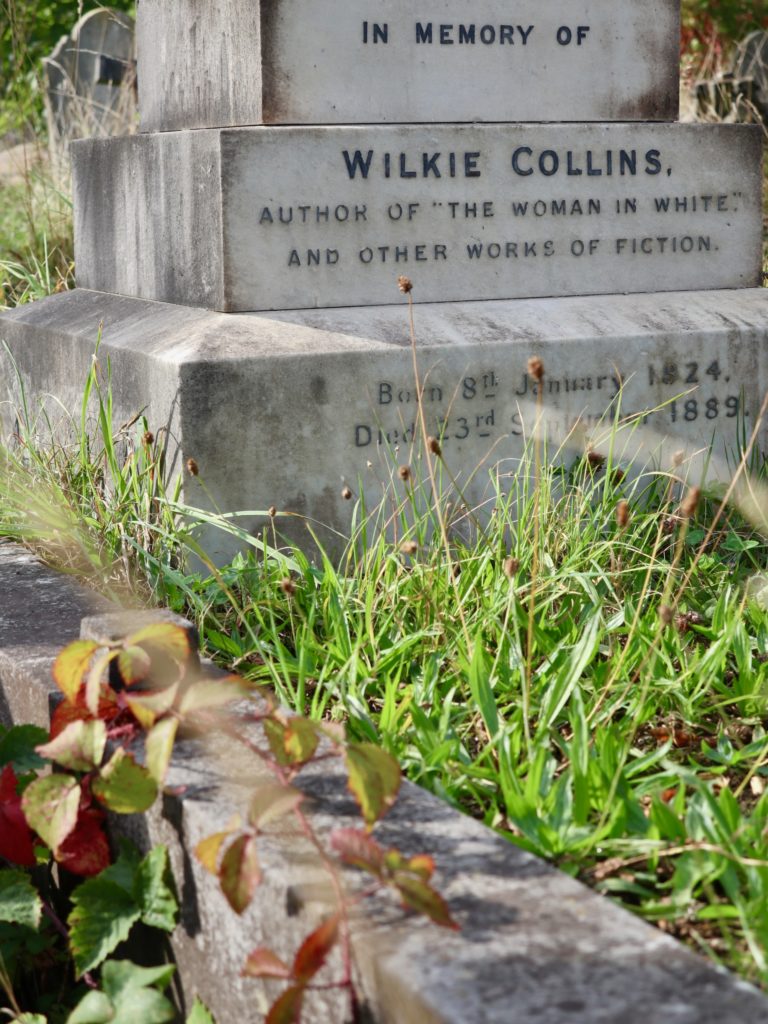
There are a number of other characters residing in Kensal Green Cemetery, including Andrew Ducrow, a equestrian circus performer. He designed his tomb himself, and it shows.
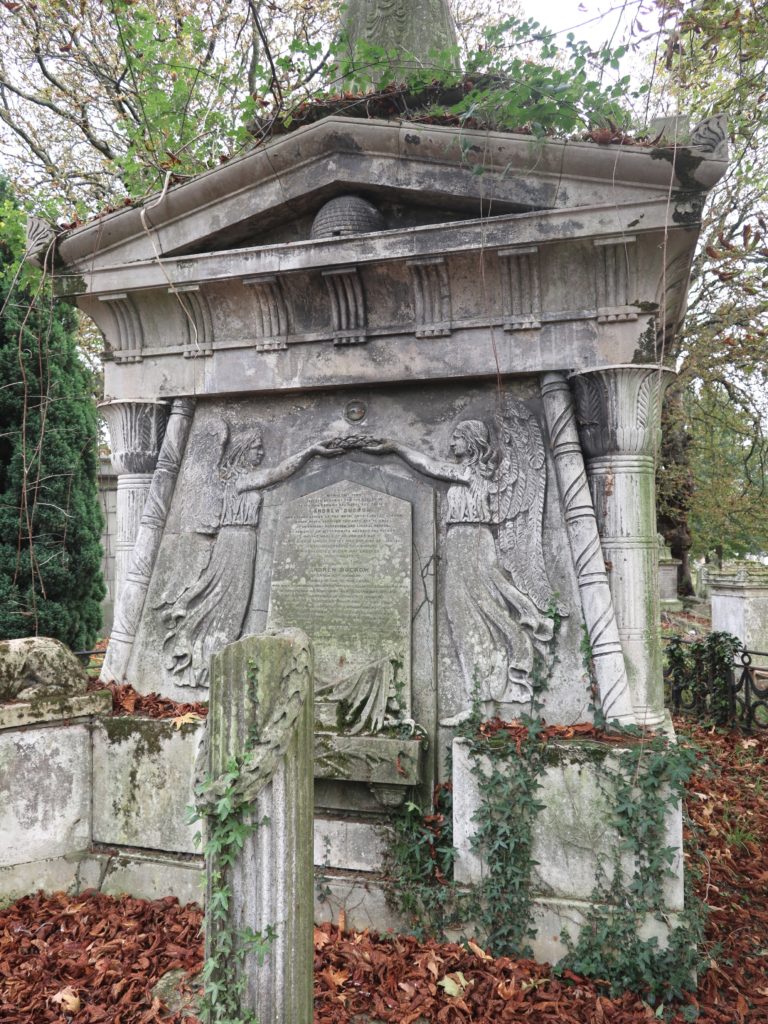
Isambard Kingdom Brunel was a noted engineer who created a tunnel under the Thames, was chief engineer of the Great Western Railway, and invented a vacuum-propulsed train. He died not working on a dangerous project, but by accidentally inhaling a coin when doing a magic trick for children.
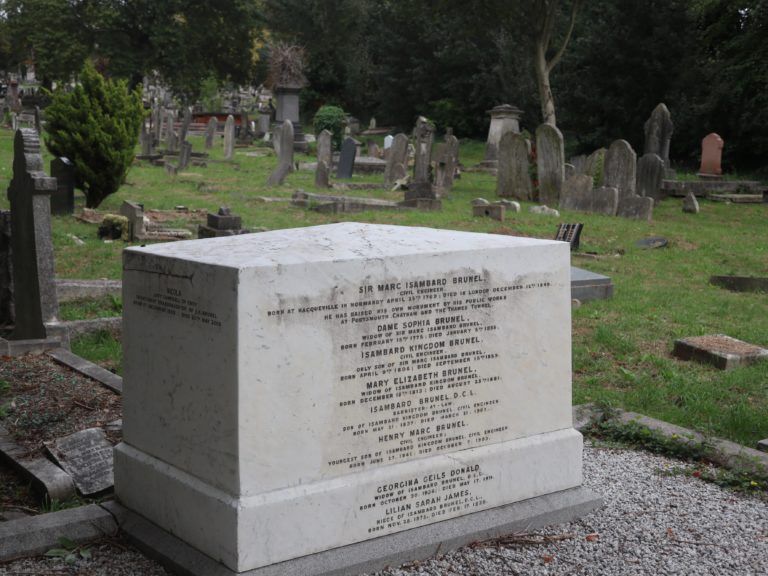
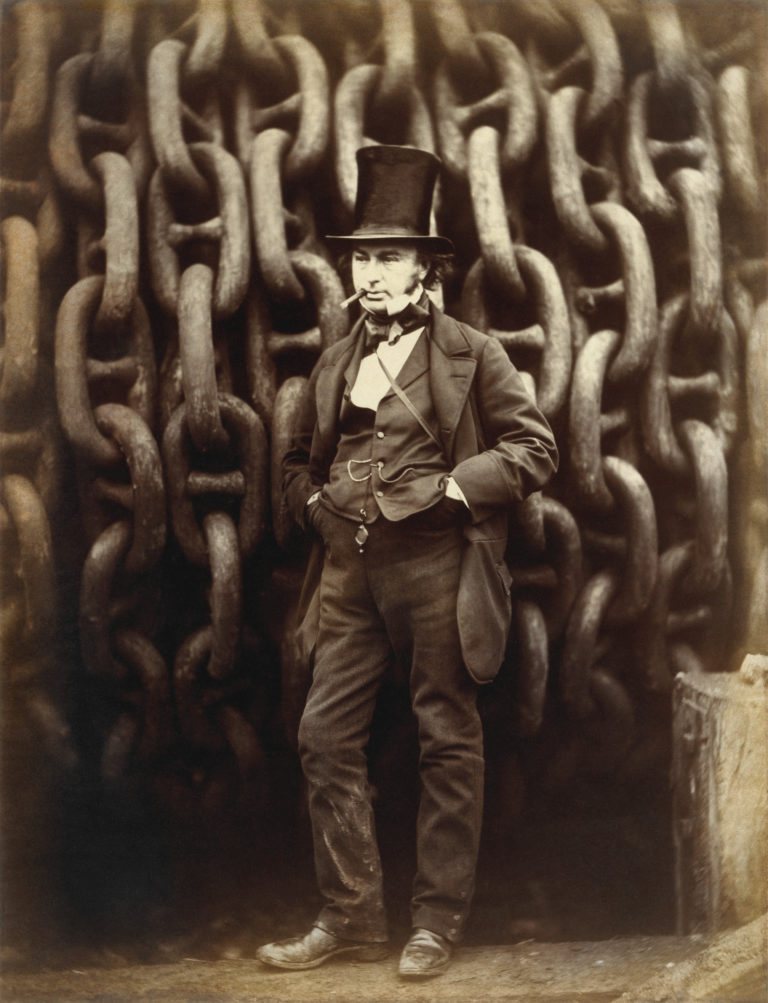
Just a few steps from the British Library, tucked behind a canalside park, is St. Pancras Old Church. Until very recently, it was home to the Hardy Tree. Long before he was a writer Thomas Hardy worked for the railroad works, which tasked him with relocating old graves in the churchyard to make room for a new rail line. The stones were artistically stacked around the tree which had grown there since the 1840s. Sadly, a storm knocked the tree down in December 2022, but the stones remain.
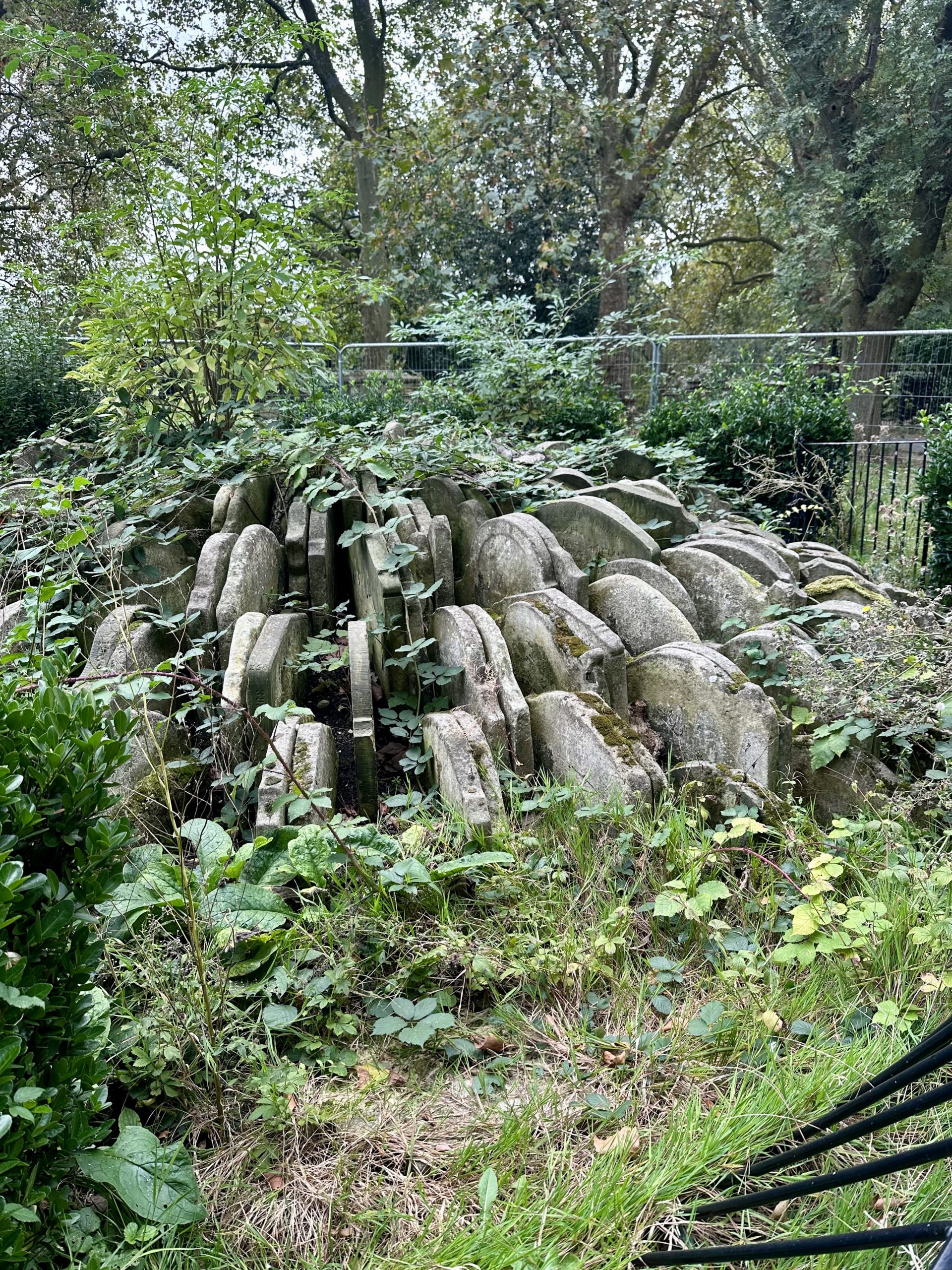
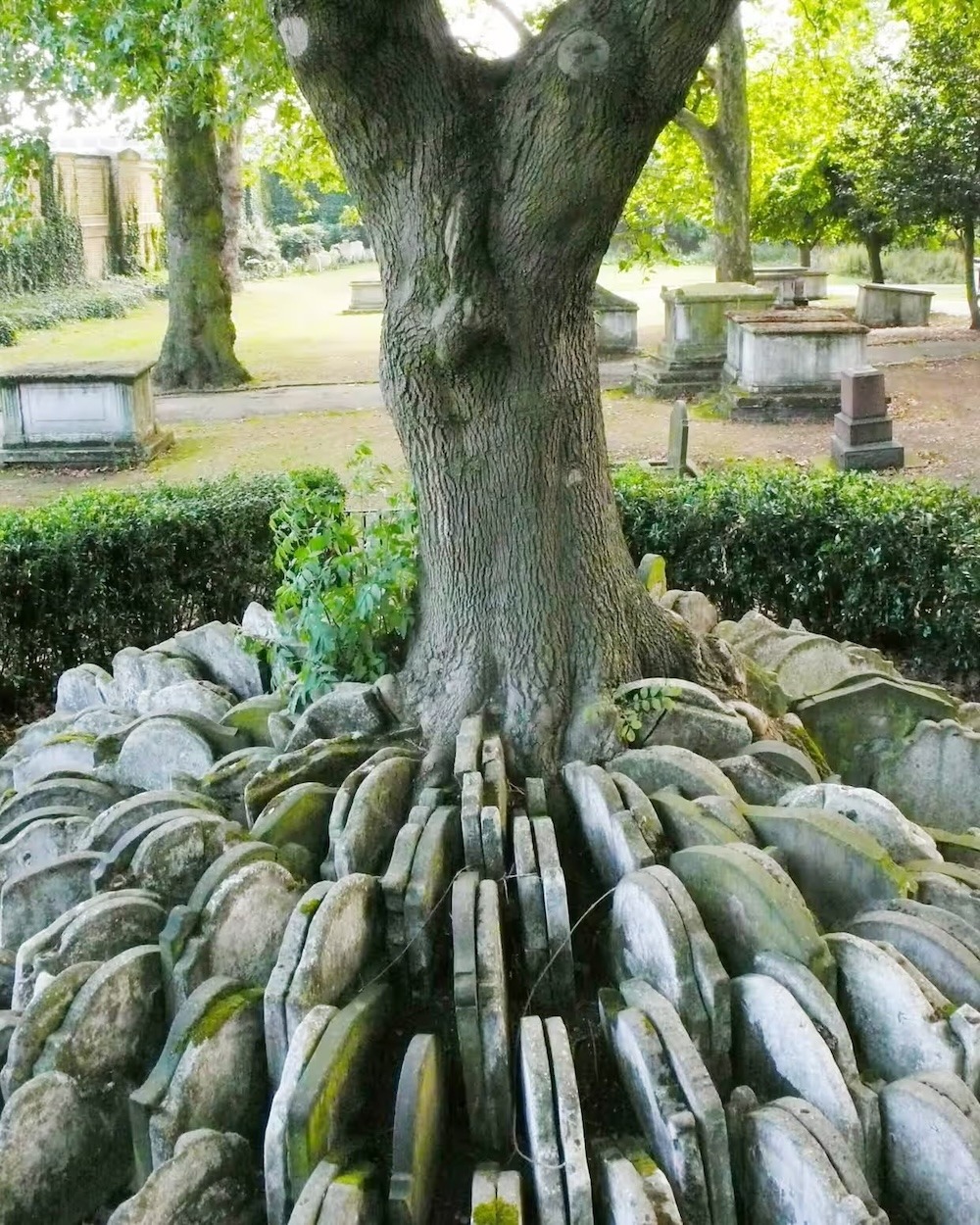
In addition to the tomb of Sir John Soane (I visited his house later in the week), the churchyard is the final resting place of Mary Wollstonecraft and William Godwin, the parents of Mary Shelley. Mary Wollstonecraft died giving birth to Mary, so she never knew her mother. Stories claim (perhaps apocryphally) that young Mary would visit the grave and trace the letters of her mother’s name in order to learn to write. She also claims to have brought her beau, Percy Bysshe Shelley, to the cemetery for dates. 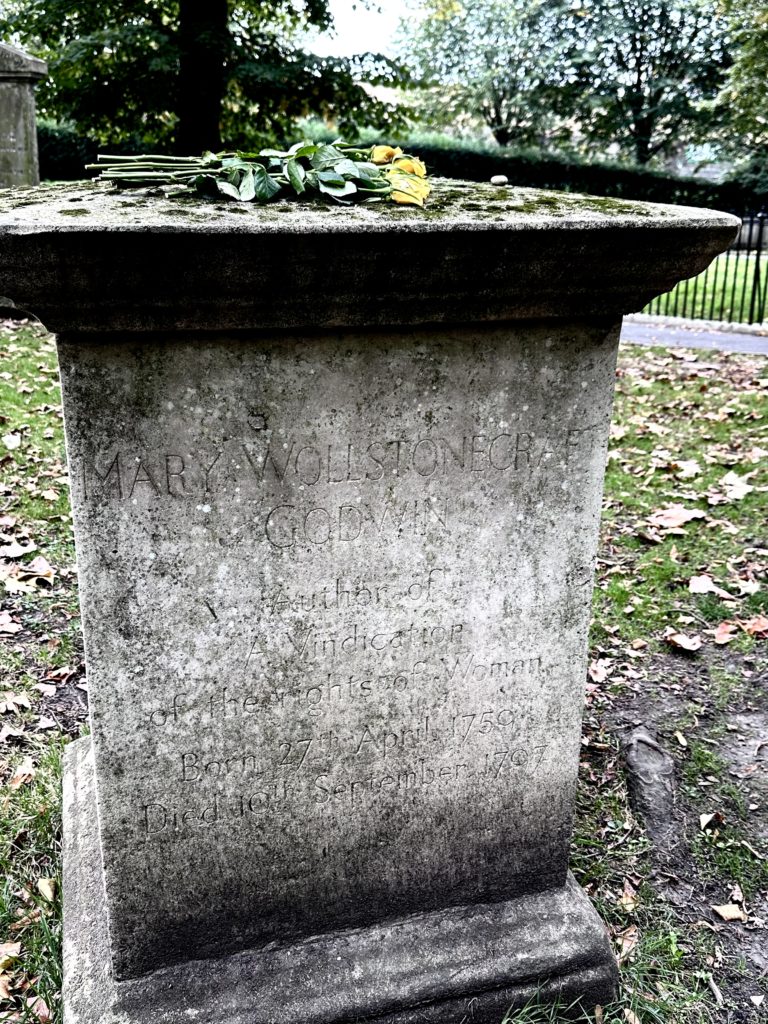
The undercroft of the Lincoln’s Inn Chapel has recently been restored and is open to the public. The chapel itself was designed by Inigo Jones in the 17th century and the undercroft was the burial place of a number of notable lawyers who practised at Lincoln’s Inn. It’s a quiet corner in busy London.
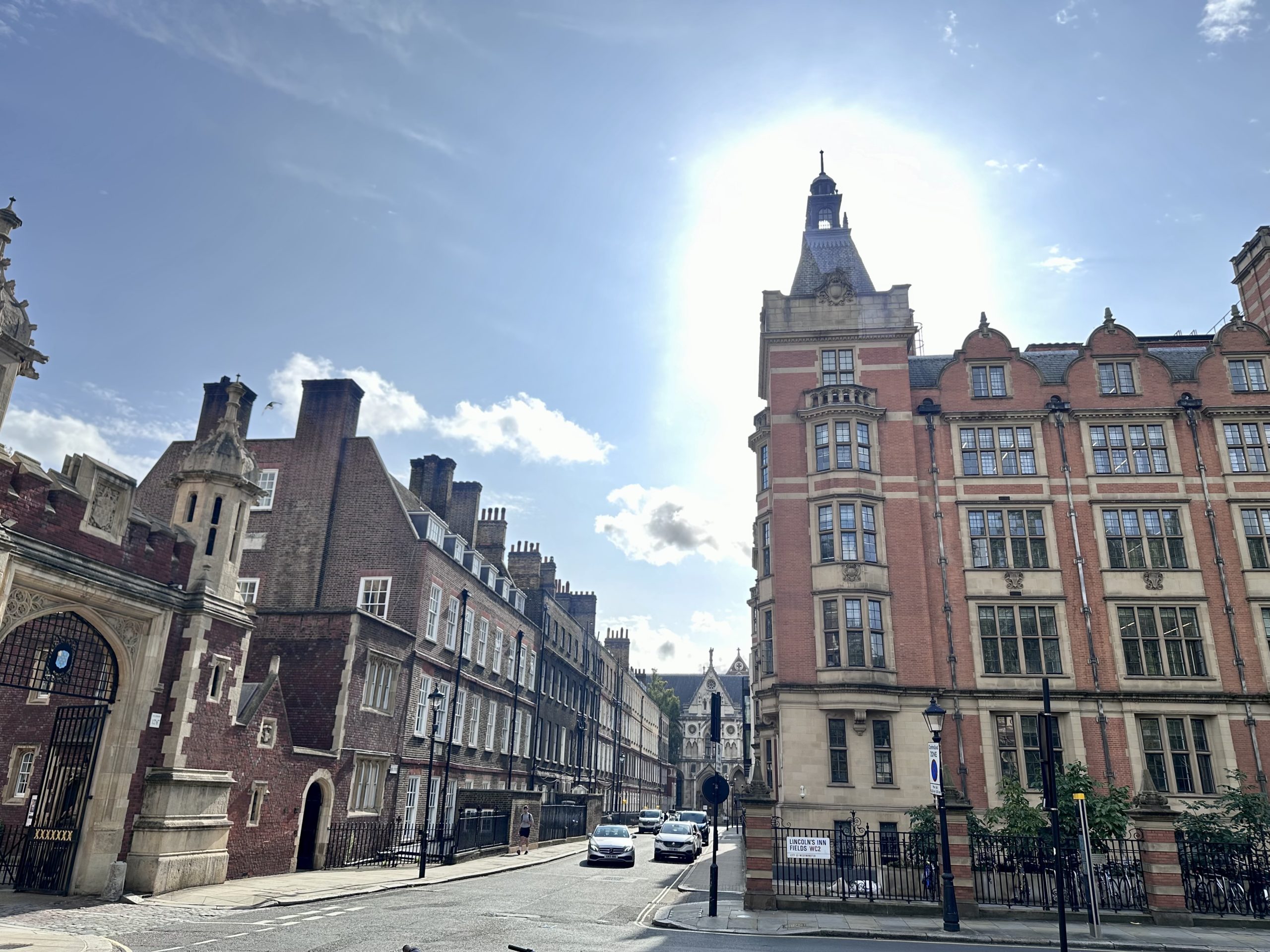
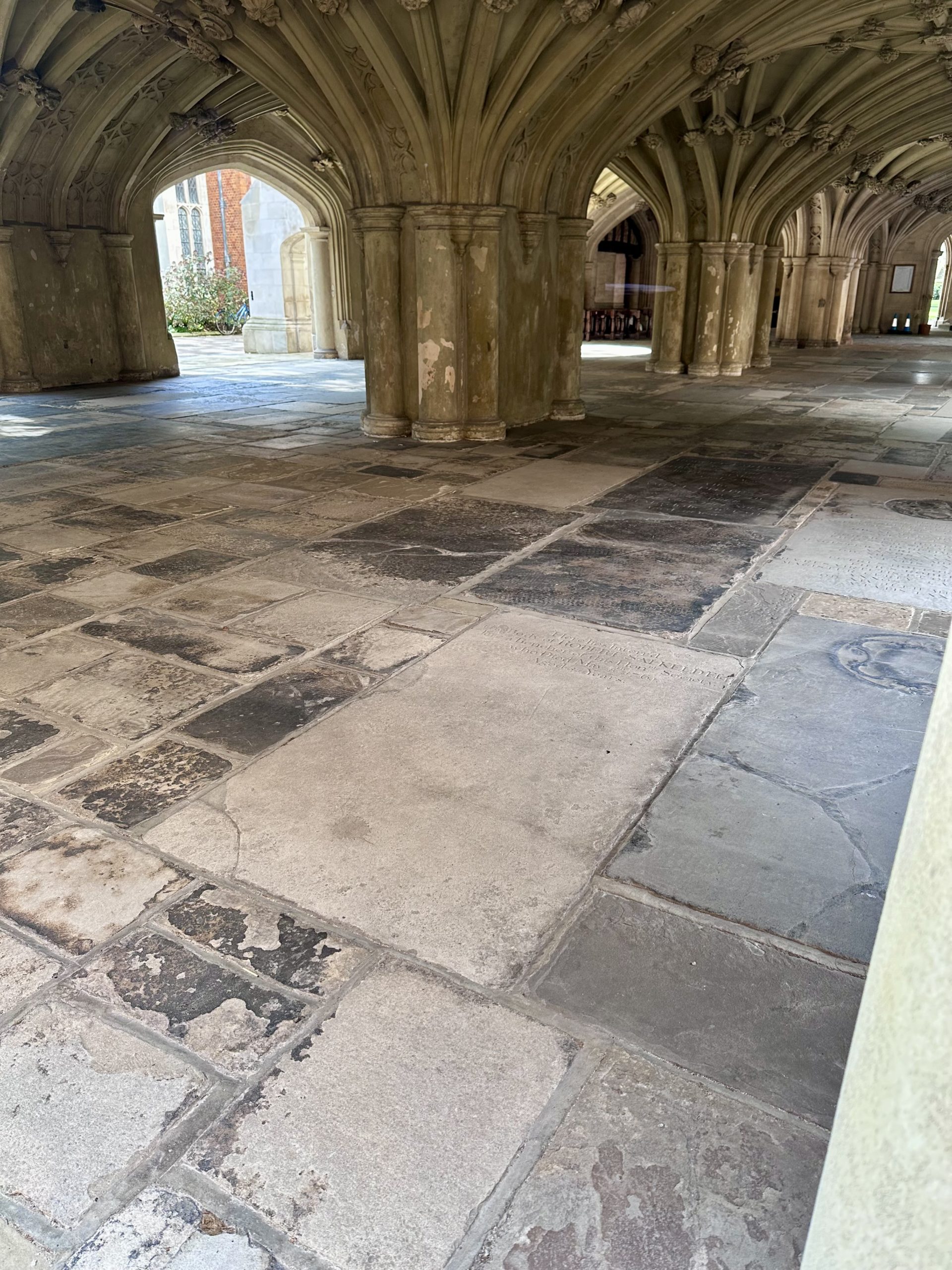
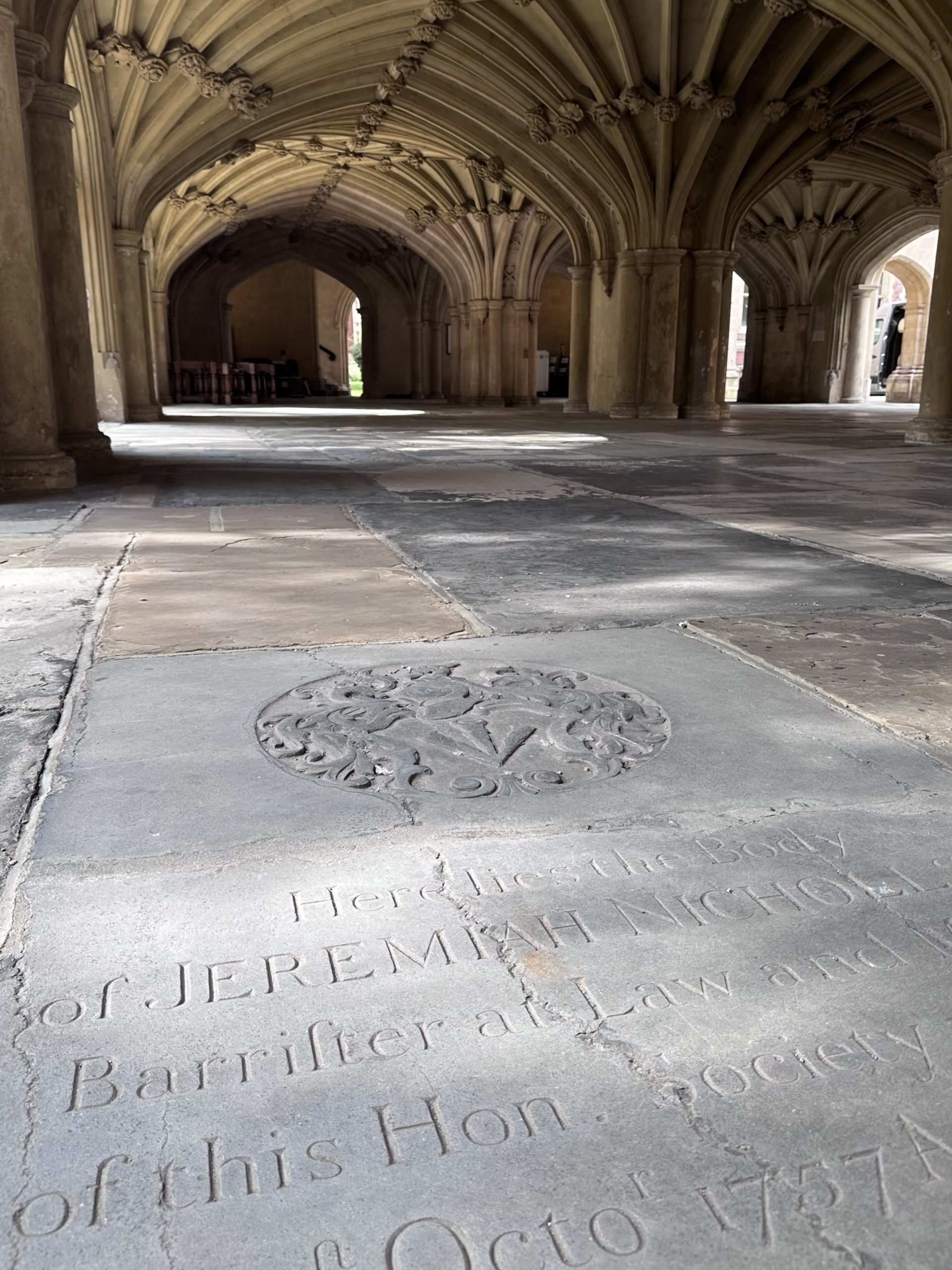
Southwark Cathedral sits near the bank of the Thames. It’s been there since the 1100s and was the home church of William Shakespeare (since it was near the Globe Theatre). Now, it is a vibrant, welcoming church with a cat named Hodge. It also has some spectacular memorials.
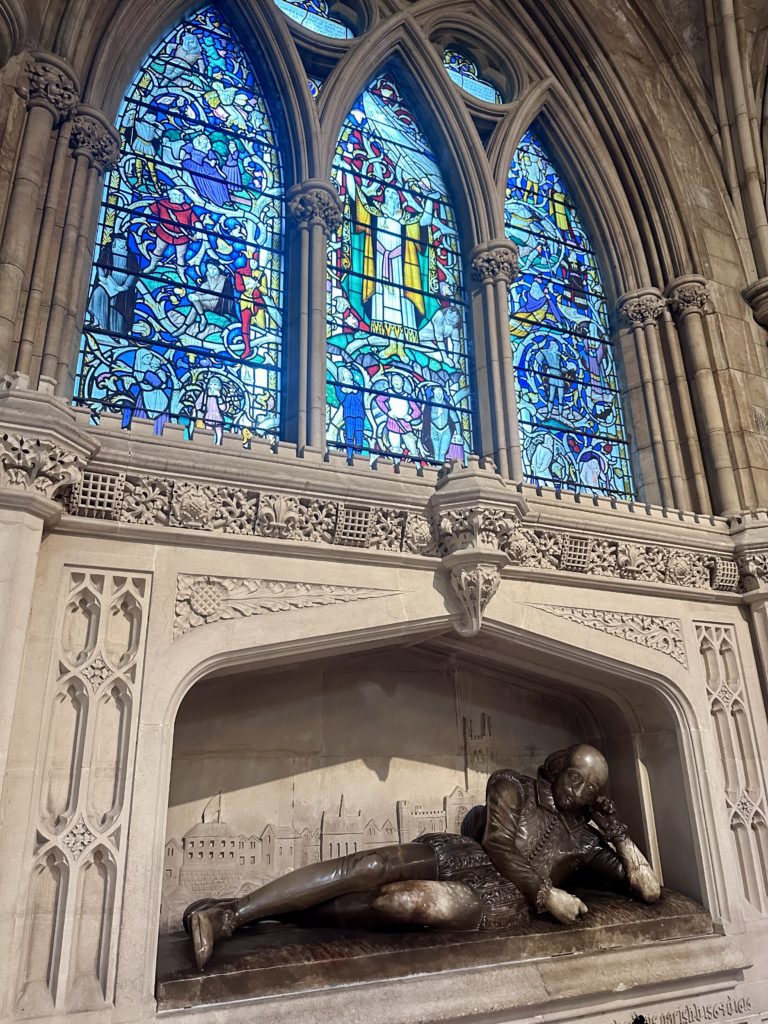
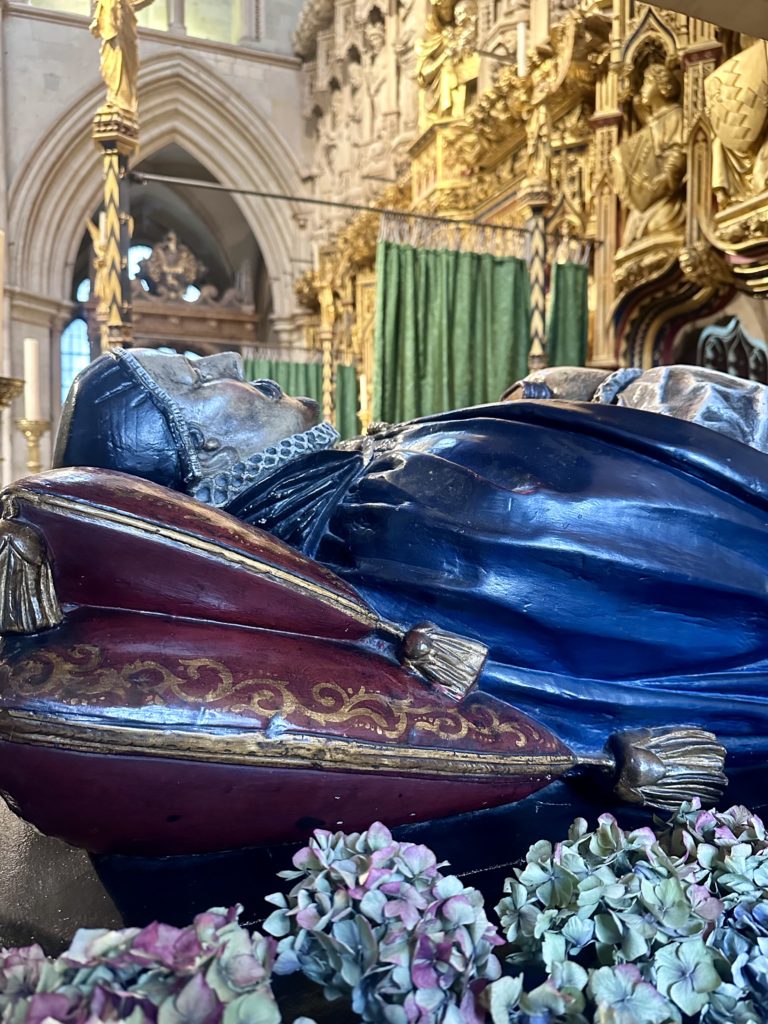
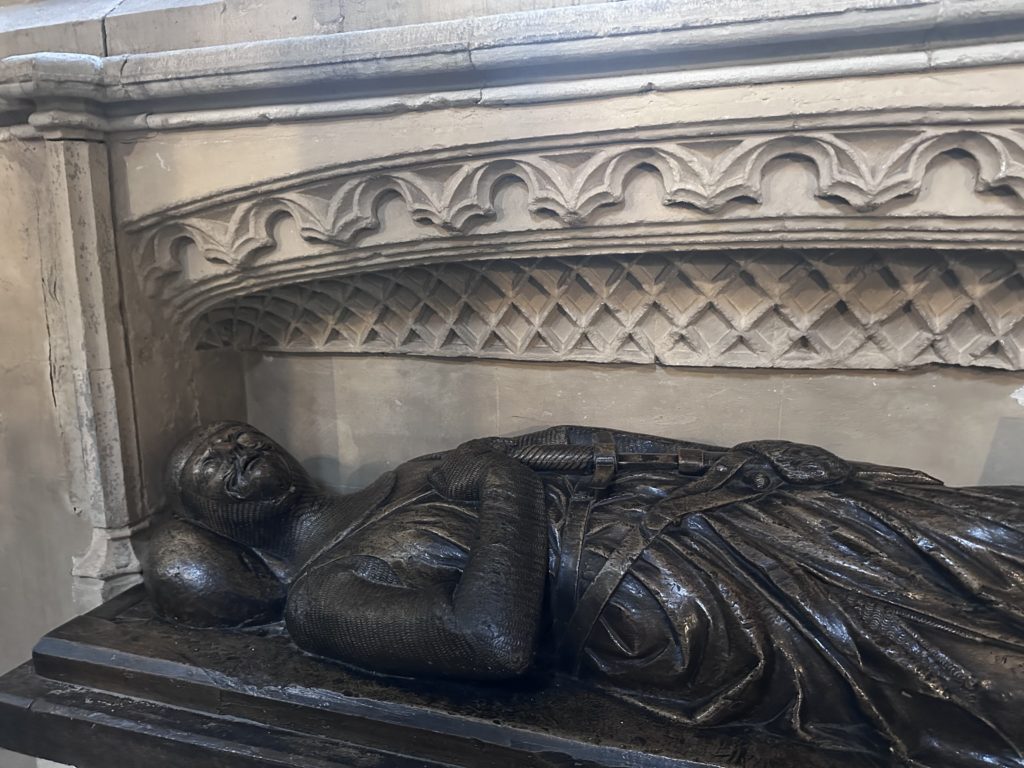
Learn more about these amazing places.
